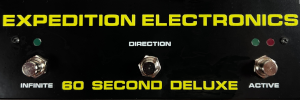Showing posts sorted by date for query Behind Designs. Sort by relevance Show all posts
Showing posts sorted by date for query Behind Designs. Sort by relevance Show all posts
Saturday, October 11, 2025
Designing a Eurorack Module interface | Instruō - ceithir
video upload by Instruō
"Hello!
Welcome to a video I’ve been wanting to make for a long time.
Instruō actually began as a video project. Specifically a time-lapse of me designing the original troika module. Ten years later, I’ve returned to that idea with ceithir, a winter holiday project I designed with video documentation in mind.
This video explores the initial design stages: sketching, layout, and concept development. There are vlog sections and time-lapse sequences with new voiceover commentary.
If you’ve ever wondered how an Instruō module design begins, this video captures that process in full.
Friday, October 03, 2025
BIG BOLD & BONKERS!! // WMD's limited edition Skorpion
video upload by DivKid
"Here’s the big, bold, beautiful and bonkers SKORPION from WMD. WMD state that Skorpion is the epitome of their ethos “New Sounds, Maximum Experience” and it’s packed with CV, ins and outs, all the controls you could dream of - and plenty we couldn’t dream of - taking us through a broad spectrum of subtle to chaos, massive harmonic range and it’s absolutely continuously explorable, a module to learn and take new things from for a long time.
Skorpion builds on William’s long pedigree of experimental module designs and Skorpion is no exception. It employs a new method of wavefolding, with 8 folders and a threshold and target system that creates a power vector of shaping. There’s masses on smart in built modulation and while all this might some complex, it delivers great sounds quickly and simply and then offers a whole world to explore, much like a massive modular system of functions behind one well laid out panel."
Tuesday, August 19, 2025
Cherry Audio | Introducing Crumar Spirit with Tim Shoebridge
video upload by Cherry Audio
"Crumar Spirit by Cherry Audio captures the unique sound and features of the exceptional analog monosynth from 1983, originally designed by some of the most legendary figures in the synth industry. Spirit is a gateway to sonic experimentation. It is not a polite instrument. Nor is it clean, safe, or obvious. However, twist a few knobs and it will reward you with some of the most colorful sounds you have ever heard from a virtual analog software synthesizer.
https://cherryaudio.com/products/spir...
00:53 - Music Intro by Tim Shoebridge
02:05 - Introducing Crumar Spirit by Cherry Audio
03:28 - Spirit Signal Path
05:49 - Mod X
08:07 - The Oscillators
13:40 - The Filters
20:34 - Audio Mixer
21:14 - Shaper Y
26:20 - Arpeggiator
30:15 - Voice Modes and Multi-Voice Cycling
31:04 - Matrix Z Modulations
31:45 - Dual Effects Chain
34:42 - Conclusion"
Cherry Audio | Crumar Spirit
video upload by Cherry Audio
Cherry Audio | Spectres Preset Pack for Crumar Spirit by James Dyson
video upload by Cherry Audio
"100 additional presets for Cherry Audio's Crumar Spirit synthesizer by James Dyson that showcase its darker and more atmospheric side in nine categories. Explore more advanced modulations, integrated effects, rhythmic arpeggios, and aftertouch performance features.
Just $9.99, exclusively from https://store.cherryaudio.com/presets...
18 Arps
9 Basses
5 Brass
8 Chords
10 Keys
9 Leads
17 Pads
14 Polyphonic
10 SoundFX"
Crumar Spirit by Cherry Audio: The rare Spirit reborn! (Part 1)
video upload by CatSynth TV
"We are proud to preset the new Crumar Spirit by Cherry Audio, a meticulous software recreation of the unique, quirky and elusive Crumar Spirit analog synthesizer from the early 1980s. This is a two-part series. In Part 1 we go over most of the original-instrument features (minus the arpeggiator).
Part 2, covering the remaining features and exploring factory presets, will be released soon.
To find out more about Crumar Spriit by Cherry Audio, please visit: https://cherryaudio.com
00:00 Introduction
00:34 A brief history
01:54 Overview of Crumar Spirit by Cherry Audio
02:35 Oscillators
09:59 Upper filter
12:41 Lower filter
20:02 Noise generator
23:43 Shaper Y (and Shaper Y audio path)
33:24 Mod X
41:24 Conclusion"
Merch: https://shop.catsynth.com



Crumar Spirit by Cherry Audio is a meticulously crafted virtual recreation that captures the unique and captivating features of the exceptional analog monosynth from 1983, originally designed by some of the most legendary figures in the synth industry. In collaboration with Crumar, we have reopened a time capsule to revive this Italian cult classic and thoughtfully elevated it with Cherry Audio's signature style.
Spirit is a gateway to sonic experimentation, whether you are after wild, unpredictable timbres or warm, analog tones. It is not a polite instrument. Nor is it clean, safe, or obvious. However, twist a few knobs and it will reward you with some of the most colorful sounds you have ever heard from a virtual analog software synthesizer.
Crumar Spirit includes over 430 sensational presets in 12 categories
Producers will find immediate inspiration in Spirit's extensive preset library, created by a talented sound design team led by veteran sound designer James Terris. And don't miss the Spectres for Spirt Preset Pack (sold separately), featuring an additional 100 additional presets by James Dyson.
A "Little Synth" Designed by Legends
Crumar S.P.A., based in Castelfidardo, Italy, was a notable player in the 1970s musical instrument industry, specializing in home organs, digital pianos, and multi-sound keyboards, and with a significant focus on the U.S. market. Sante Crucianelli, the son of the owner, became the driving force behind Crumar's design and strategies. Crumar became known for its open lab culture, frequently allowing competitors to test instruments, a rare practice for the time. Another key figure during this period was Luciano Jura, a designer, musician, and programmer. Luciano became crucial as Crumar's point of contact with synth pioneer Bob Moog, which led to a collaboration that resulted in the creation of Crumar's Spirit synthesizer.
Although many details have been lost due to the passing of key figures and the closure of Crumar, the development of the Spirit synthesizer in the U.S. is well documented. Key contributors to the project, codenamed "Little Synth," included Moog engineer Jim Scott, Moog clinician and electronic music historian Tom Rhea, and Bob Moog himself. The project likely began around 1980 or 1981, and incorporated elements from earlier projects by Scott and Moog. Rhea played an essential role in defining the Spirit's key features, such as the keyboard scanning setup, panel layout, functional architecture, and technical documentation. The Crumar Spirit went into production and was released in late 1983.
Saturday, May 17, 2025
The “Thing” The Great Seal Bug.
video upload by Behind Designs
This one is in via John L Rice.
"WW2 & Cold war weapons and spy gadgets were truly amazing! Have you ever wondered about the history of RFID and how it works? It was originally developed and first used as a Soviet cold war spying device. The Thing or The Great Seal bug as it was known, sat on the wall of a US ambassadors office for 7 years completely undetected listening into American secrets. The technology behind this revolutionary device now resides in your pocket in the form of Radio Frequency Identification. or RFID. Thank you so much to everyone who has subscribed and supported the channel so far.
Music Credits Lord of the dawn - Jesse Gallagher
Maestro Tlakaelel - Jesse Gallagher
Research, Script, Voice Over, Animations, 3D Modelling, Rendering, Editing. - Me"
Interesing bit of history regarding Leon Theremin.
Wednesday, April 23, 2025
The Master of Synthesizer Design : Axel Hartmann : From Inspiration to Iconic !
"Apr 11, 2025
The Master of Synthesizer Design : Axel Hartmann : From Inspiration to Iconic !
Hosted by Vin Curigliano of AAVIM Technology, I am joined by guest co-host Pete Brown of Microsoft, and special guest Axel Hartmann who has been the go to designer for some of the most iconic synthesizers of the last 35 years, and continues to be one of the leading designers in the field. Chances are, you have seen or played one of his designs.
We discuss Axel's history in music and technology, what lead him to follow the path to Industrial Design, and what motivated and inspired him to focus his attention and creativity, primarily in the area of musical instruments.
Starting with his early career at Waldorf that was initially in graphic design but expanded into the area of industrial design and the eventual design and development of the iconic Waldorf Wave synthesizer, as well as many other well-known and much-loved synthesizer designs for numerous other manufacturers.
We then cover a large number of his better-known designs, and get first-hand insights and behind the scenes details of what is actually involved in bringing these instruments to market.
Throughout, we dive into Axel's design philosophy and how he works in collaboration with the clients to bring the designs to life and to market. We navigate the highs, lows, hits, and misses over his career, and much, much more, with some great stories and laughs along the way."
Only 400 to 500 Hartmann Neurons built.
This one was sent my way via Soviet Space Child
Wednesday, November 20, 2024
Instruō - tràigh [Signature Edition]
video upload by Instruō
Update: DivKid video added below.
"Hello!
Jason here.
Thank you for watching this video :)
This Signature Edition limited re-release of the tràigh low-pass filter module is available for purchase direct from Etsy:
https://www.etsy.com/uk/listing/18233...
I am producing a limited batch which will be available for purchase while stock lasts.
This revised module was developed as a creative side project over the past month or two as a means of dealing with the unfortunate situation of having a very large pet greyhound with a relatively large diagnosis of cancer.
Winston was confirmed to have a stage 2 soft cell sarcoma earlier this year. He underwent a surgery on September 24th during which the tumour was successfully removed. (He has recovered very well and quickly!)
Due to the location of the sarcoma there is a high likelihood of cancer cells remaining at a microscopic level. If left unchecked they will likely return as a tumour with a chance of metastasising.
Winston began a 4 week treatment of radiotherapy on November 4th.
As of writing this we are now past the half way point and he is responding very well with no significant side effects presenting.
Each treatment requires full general anaesthetic, so I have a very dopey boy every Monday, Wednesday and Friday for the entire month of November.
The vets do provide him with some roast chicken each session when he wakes up. So he seems quite happy with his current unusual routine.
Friday, November 01, 2024
SERGE Medusa Comes to Eurorack
video upload by Serge Modular | Random*Source
"Teo takes the Medusa for Eurorack for a (long) spin, here's the full recording used for the IG teaser ... #sergemodular"
Press release follows:
Introducing the Serge MEDUSA Subharmonic Oscillator for Eurorack: Unleashing New Depths in Modular Synthesis
Frankfurt, 1 November 2024 — Serge Modular proudly announces the launch of the Serge Medusa Subharmonic Oscillator for the Eurorack modular synthesizer format. This groundbreaking module designed by Serge Tcherepnin brings orchestral clusters, coveted undertones and rich harmonic complexity to the Eurorack format.
A Revolution in Sound Design
The Subharmonic Oscillator is one of Serge’s latest inventions and one of his most extraordinary designs. 7 accurate analog VCOs tied at the waist—in unison, yet their frequencies can open like a fan, creating complex clusters. Each voice generates a pulse wave. It is temperature compensated and follows exceptional 1V/Octave tracking.
In addition, each voice provides (voltage controlled) pulse width modulation or subharmonic division as well as an individual output. By producing mathematically related lower frequencies, it enables the creation of complex and evolving soundscapes that were previously difficult to achieve within the Eurorack environment.
The precision of these voices in combination with a global Spread control and various FM inputs opens an enormous sonic range from massive unisono sounds to dissonant, orchestra-style textures. The ODD and EVEN outputs enable the use as a stereo oscillator.
Key Features:
• Original Serge 2023 design
• 100% analog
• Seven simultaneous subharmonic VCOs with individual Outputs, PWM and variable divisions
• Wide Range Frequency Control: Precisely dial in frequencies from deep bass to soaring highs, all synchronized to the master oscillator.
• Voltage-Controlled Parameters: Extensive CV inputs allow for modulation of pulse width and frequency divisions, enabling expressive performance potential.
• Odd and Even outputs for independent processing / Stereo use.
• Global Spread Control (manual and VC)
• Linear and Exponential FM
• Eurorack format (3U), 42 hp
• Power consumption: 220mA @ +12V, 200mA @ -12V
• Skiff-friendly: depth less than 25mm (1")
“This is my version of a cluster generator. Clusters are part of the contemporary music arsenal of effects. The Subharmonic Oscillator has a total, tracking, V/octave range that is the same as all our VCOs, however, it outputs only pulse waves. Pulse-width operates from instantaneous -> square wave > 1st sub-harmonic > 2nd sub-harmonic ...> Nth sub-harmonic. You guessed it, this is one VCO that sounds like a symphony orchestra playing Atmosphères by György Ligeti.”
Serge Tcherepnin, 18 October 2023
Unmatched Versatility
Designed for both traditional musicians and experimental artists, the Serge Subharmonic Oscillator excels in a variety of applications:
• Bass Enhancement: Generate powerful sub-bass frequencies to add weight to your mixes.
• Polyphonic Textures: Create rich, chord-like structures from a single note input.
• Rhythmic Modulation: Utilize subharmonics to produce complex rhythmic patterns and sequences.
• Sound Exploration: Dive into uncharted sonic territories with modulations and cross-patching.
Availability
The Serge Subharmonic Oscillator will be available starting November 1st, 2024 through Serge Modular / Random*Source and authorized dealers worldwide.
The Story behind Medusa
“I was sitting on a bench recovering from a bike ride at the edge of Fontainebleau forest, when a swarm of crows - some 30-40 of them, suddenly erupted in the sky above the large forest trees facing me. They swirled in a large arc, emitting a few caws-caws, disappearing and reappearing wildly in the sky in front of me.
And here is what this made me realize about my electronics: Drones have been part of my musical consciousness from the very beginning, thanks to LaMonte Young and the many examples of drones in Indian classical music. One of my first electronic circuits was a 3 oscillator 9V operated shruti box. Maryanne Amacher, Eliane Radigue, Charlemagne Palestine, are drone masters I helped and fostered. Charlemagne still uses the console of ultra stable drone oscillators that I designed for him more than 50 years ago.
Drones and clusters, in fact. Clusters, thanks to the marvelous composer Henry Cowell who coined the word for music. The fruit of all this, was me deciding on designing electronics for the creation of drones and clusters. MEDUSA is the result of this project.
But what do a swarm of crows swirling in the sky above a forest have to do with drones and clusters??
EVERYTHING
MEDUSA is the perfect module for letting fly a swarm of semi independent musical notes, swirling in and out of unison, clusters, or chords, capable to scaling the entire range of frequencies, from sub-sonic to inaudible. MEDUSA gives wings to drones :)”
About Serge Modular
Serge Tcherepnin is an American composer, musician and electronic mastermind of Russian and Chinese descent who grew up in France and in Chicago. In 1970 he joined the music faculty at Cal-Arts where he developed the idea and design of the first “Serge” modules. He founded his company, Serge Modular Music Systems, in Hollywood, in 1975.
Random*Source was founded by Ralf Hoffmann in 2015 with a mission to carry on and extend the work of synth pioneers Serge Tcherepnin and Jürgen Haible. Since the beginning Random*Source has been working in close cooperation with Serge on a new generation of the Serge system. In 2018 Serge became Chief Innovation Officer and is leading the development under the Serge Modular brand.
Tuesday, October 15, 2024
Roland Announces SP-404MKII KDJ Records Limited Edition
Press release follows:

 "Special Collector’s Edition of the SP-404MKII Sampler with a Custom Faceplate, Exclusive Sample Banks, and Curated Music from Moodymann and the KDJ Records’ Roster
"Special Collector’s Edition of the SP-404MKII Sampler with a Custom Faceplate, Exclusive Sample Banks, and Curated Music from Moodymann and the KDJ Records’ RosterLos Angeles, CA, October 15, 2024 — Roland announces the SP-404MKII KDJ Records Limited Edition, a signature version of the world’s favorite portable sampler. This unique collaboration celebrates the continuing legacy of Kenny Dixon Jr., aka Moodymann, the Detroit music maverick whose influence spans three decades of trailblazing music released on his KDJ Records imprint. Limited to 600 units worldwide, this exclusive drop features an SP-404MKII with a custom aluminum faceplate, new sound banks crafted by the label’s roster, and a seven-inch vinyl record and mixtape filled with key selections from the KDJ discography.
Founded in 1994, KDJ Records is a sonic testament to Moodymann’s enigmatic musical vision, collaborative spirit, and deep-rooted love for Detroit. Blending soulful electronic sounds with Motor City swagger, KDJ’s steady stream of groundbreaking Moodymann albums, 12-inches, and limited-edition pressings have cultivated a global fanbase and influenced a generation of new music makers. Moodymann’s creative community—including legends like the late great Amp Fiddler, Juan Atkins, “Mad” Mike Banks, and label mates Andrés, Rick Wilhite, and Theo Parrish—provides much of the inspiration behind the releases of KDJ and sister label Mahogani Music.
Moodymann beams with pride about the positive opportunities that KDJ Records has created for his local Detroit music community. “30 years of KDJ provided me, personally, a way out. But it also provided a way out for a few other people, for me to turn around and help them as well. The best part of that is I could bring my whole team with me that I grew up with."
The SP-404MKII KDJ Records Limited Edition comes loaded with ten banks of exclusive samples and patterns, including six new tracks and four modern KDJ classics. From producing and remixing to performing live, these rare pockets allow fans to hitch a ride on Moodymann's musical express.
The sampler features a high-shine aluminum faceplate that radiates the artistic spirit of KDJ Records, making it a visually striking addition to any collection. Along with the SP-404MKII hardware, fans get a seven-inch vinyl record with never-before-heard edits of “I Think of Saturday” and “Hold It Down,” plus a 60-minute mixtape curated by Moodymann himself.
About the SP-404MKII
Roland SP samplers are the bona fide kings of performance-based beatmaking, with deep features and portable designs that fuel the engines of creators on the move. The SP-404MKII is the latest generation model in the long-running series, delivering ultimate performance with the latest tech advancements and updates inspired by the global SP community. Key features include a vivid OLED display, 17 velocity-sensitive RGB pads, extensive onboard effects, versatile power options, and more.
Availability & Pricing
The Roland SP-404MKII KDJ Records Limited Edition is available now in the U.S. for $599.99."
Check with dealers on the right for availability.
Saturday, October 12, 2024
Machina Bristronica 2024
video uploads by sonicstate
Playlist:
1. Bristronica 24: MyVolts The Silent Alchemist Nears Shipping
We caught up with Caroline who gave us the latest update to the *Silent Alchemist*, a versatile power hub designed for musicians. Featuring five isolated USB-C outputs and a high-wattage sixth output capable of delivering 100 watts, the device can power a Mac with the remaining outputs providing 20 watts each. Its independent circuits ensure noise-free operation, catering to a variety of devices including the Dreadbox module and Sysmo slope generator.2. Bristronica 24: Circuit Happy ML2M Clock Sync module updates
The Silent Alchemist uses innovative step-up power tips to convert USB-C input to the correct voltage for various devices. There's also new feature: an uninterruptible power supply allowing seamless transition between wall and power bank sources. Also introduced were updated cables, such as silver candy cords and floating ring TRS to TS cables, expanding connection flexibility. The Silent Alchemist is expected to be available in December with a competitive pricing strategy.
More Info:
https://myvolts.com/
At Bristronica 2024, we caught up with the creator of the *ML2M*, who introduced us to the latest version. The ML2M is a compact Eurorack module with Wi-Fi capabilities, allowing seamless synchronization with Ableton Live, Bitwig Studio, and iOS music apps using Ableton Link without the need for cables. It either connects to an existing network or creates its own, ensuring robust sync even in environments with unreliable Wi-Fi. The module, which retains its 2HP size, now features MIDI integration through TRS jacks. Users can access a web interface to configure each output for different clock divisions and reset triggers, making setup straightforward and flexible.3. Bristronica 24: Archaea Exchange Patching Module
Alongside the ML2M, there's also the Missing Link Junior. This desktop version offers the same functionality but in a box format, complete with MIDI and CV clock outputs. Both products are now accessible, with a starting price of $250.
At Machina Bristronica 2024, we caught up with Arran from @archaea_modular_synthesis who presented the *Exchange Module*. This programmable patcher, a year in the making, evolved from its early prototype stage to a fully functional module. Arran explained how the Exchange can route synth voices via a beam controller and three exchange modules installed within the skiff, allowing for versatile patching. Operating like a matrix patchbay, it enables users to select inputs and outputs with the push of a button, create presets, and chain multiple modules for synchronized patching.
Communication between the modules occurs over the Eurorack power bus as well as over MIDI via the USB-C connection. The Exchange maintains analog integrity, ensuring there’s no conversion latency. The forthcoming release expected in late November 2024, includes a USB-driven editor for enhanced control capabilities.
LABELS/MORE:
Archaea,
Circle Guitar,
Circuit Happy,
Componental,
Dreadbox,
Halftime,
Landscape,
Machina Bristronica,
MATRIXSYNTH Members,
Midicake,
myVolts,
News,
Patching Panda,
Toadstool Tech,
u-he
Friday, October 04, 2024
The Plantasia Synth 💎 Crown Jewel of Analog with Mark Barton
video upload by Anthony Marinelli Music
You can find Alex Ball's The "Plantasia Moog" Modular Synth - An Untold Story here.
"Dive into the captivating story of Mark Barton, the genius behind groundbreaking inventions like SynDrums, his pioneering system called Speech Assisted Music (SAM) designed to convert text into speech, his work with Steve Job on the first Apple computer release and his award-winning plugin designs with Cherry Audio. Discover how Mark's love for sound led him to meeting Mort Garson and subsequently owning the legendary Moog "The Plantasia Synth" that Mort played on his best -selling album Plantasia, and how it eventually found a new home with Anthony! You'll also hear untold stories about Mort's Moog, Mort's Music and Mort's Genius. Join us as we explore the intersection of innovation and music, showcasing incredible creations and the stories behind them. Subscribe for more inside looks at the magic of synthesis!"
Friday, August 30, 2024
Keith McMillen Has Passed Away
Some sad news in via Keith McMillen Instruments
"It is with heavy hearts that we announce the passing of Keith McMillen.
Keith McMillen, a pioneering force in audio and music technology, passed away this week leaving behind a legacy of innovation and a profound impact on the music industry. Born July 10, 1957 in Bermuda, Keith dedicated his life to revolutionizing how live interactive music is played and experienced.
A passionate advocate for the intersection of technology and music, Keith’s academic foundation was laid at the University of Illinois, where he earned a BS in Acoustics under the mentorship of James Beauchamp. He further honed his skills in classical guitar and composition under the guidance of Herbert Brun, Scott Wyatt, and Sal Martirano. Over the years, Keith developed MAPPS, an integrated computer composition, notation, and performance system that became the bedrock of his group TrioMetrik.
Keith’s professional journey began in 1979 when he founded Zeta Music, a company that would become synonymous with the modern violin. His revolutionary electronic instrument designs set new standards in the music industry, creating a market that continues to influence musicians today.
In 1992, as Vice President at Gibson Guitars, Keith founded G-WIZ, an R&D lab where he developed ZIPI, a groundbreaking musical instrument control language that evolved into the Open Sound Control (OSC) protocol and lay the foundation for MPE and MIDI 2.0.
In 2005, Keith founded Keith McMillen Instruments, a company that quickly became known for its cutting-edge approach to musical technology using patented Smart Fabric sensors. Keith established the company to bring his innovative vision to life, and under his leadership KMI introduced groundbreaking products that combined Smart Fabric with musical artistry, including the K-Bow, QuNeo, QuNexus and K-Board Pro. These instruments, recognized for their versatility and advanced capabilities, reflected Keith’s dedication to pushing the boundaries of what was possible in music technology. His work through the company solidified his reputation as a pioneer in the field and left a lasting impact on the music industry.
In 2014, Keith founded BeBop Sensors with a mission to expand Smart Fabric applications into the fields of wearable sensors and haptics. This led to the development of several products and patents, including virtual reality gloves and insole sensors. This work inspired Keith to form Sensible Robotics, a new company where Keith focused his full attention on Making Robots Feel Better™ by using Smart Fabric to develop robotic skin.
Keith McMillen’s work exemplified a lifelong commitment to exploring how computer intelligence and user interface can enhance and expand musical performance. His passing is a great loss to the world of music and technology, but his innovations and achievements will continue to inspire and shape the future of both fields."
His instruments have been featured throughout numerous posts here on MATRIXSYNTH (271 posts to date including this one). You can find a handful of posts featuring Zeta here.
Tuesday, April 30, 2024
Tiptop Buchla Performance
video upload by Todd Barton
"My performance for the Modular World Tiptop Buchla Spotlight this past Sunday. [video below]
One of many amazing performances featuring the range of Tiptop Buchla modules. This performance features all the currently available modules including the external preamp input of the 207t mixer with my shakuhachi. Enjoy!
My Patreon: / synthtodd"
Ep43 - Spotlight: TIPTOP/BUCHLA
video upload by Modular World
"BUCHLA FOR THE PEOPLE!
Gur Milstein (TipTop), is working with Buchla under the consultation of Todd Barton to reissue the legendary 200 system from the early 70's. The best part--the modules are affordable.
I know Don Buchla would be very proud to see the kind of legacy that he has left behind if it means that more people could afford to touch his creations.
Modular World will always stand with stories about people, and the passions that push them to stand out. Gur Milstein (TipTop) told me that working with Don's old schematics to recreate these designs has been the greatest honor of his professional life. Yes.
Grab your popcorn and have a seat. With 18 performances and two amazing interviews, this is going to be good."
Friday, February 02, 2024
Exploring the 1st Buchla 100 Modular Synthesizer
video upload by Sarah Belle Reid
"This video is a historical, technical, and musical deep dive into the Buchla 100 Series Modular System at the Mills College Center for Contemporary Music. This instrument was the first voltage controllable modular synthesizer built by Don Buchla—it was delivered to the San Francisco Tape Music Center in the mid-1960s.
In this video we’ll start with a brief historical overview of the Buchla 100 Series Modular System and the San Francisco Tape Music Center. Then, we’ll unpack everything that’s inside the instrument module by module. Finally, I’ll share some of the quirks of this particular instrument, and lots of patch examples to illustrate its unique voice and character.
As I was getting to know this instrument, I tried to keep in mind the circumstances surrounding its development—the people who contributed to it, the time in which it emerged, and the state of electronic music at the time of its invention. These thoughts greatly inspired my approach to working with the instrument and are present throughout this video.
It’s a rare opportunity to be able to work with a historical instrument like this one. I have always been super inspired by Buchla’s work in general, but like many people have had few opportunities to work with his original instruments. Instead, much of my experience has been through newer instruments inspired by his designs. Being able to work closely with this instrument was an incredibly inspiring and clarifying experience that allowed me to gain a deeper understanding of Buchla’s own creative and technical development, as well as the multitude of music, modern modules, and instruments that have been inspired by his work.
Special thank you to Mills College for letting us spend a week in the electronic music studio working with the Buchla 100; to The Buchla Archives and Ryan Gaston for helping to put this video together; and also to all of the amazing folks in my Patreon community for your support in helping to bring educational projects like this one to life!
Learn more / join the waitlist for Learning Sound and Synthesis, my online modular synthesis and sound design class: https://www.soundandsynthesis.com
Join my Patreon community for behind-the-scenes content, unreleased music, and extended tutorials: sarahbellereid
Thank you to:
Mills College Center for Contemporary Music https://www.performingarts.mills.edu
The Buchla Archives https://www.buchlaarchives.com
Ryan Gaston (co-producing + filming) https://gastonsounds.com
Hainbach (tape slicing footage)
TIMESTAMPS:
00:00 Historical Overview: Buchla 100 + the San Francisco Tape Music Center
7:38 Mills Buchla 100 System Overview
14:27 Timbre in the Mills Buchla 100
18:29 Chaos in the Mills Buchla 100
21:52 Voltage Control Quirks
25:00 Sequencing Tactics: Triggered Segments
30:40 Sequencing Tactics: Extended Sequences
32:06 More Patches + Sounds
32:36 Ring Modulated Reverb Patch
34:40 Keyboard Chaos Patch
36:55 Gated Voice Patch
38:29 Wonky Drum Machine Patch
38:57 Triggered Gestures Patch
39:14 Transposed FM Sequence Patch
39:48 Bell Tones Patch
40:27 Touch Controlled Ratchet Patch
41:00 Sequenced Melodic Patch
Sarah Belle Reid is a performer-composer, active in the fields of electroacoustic trumpet performance, intermedia arts, music technology, and improvisation.
www.sarahbellereid.com"


"In the Spring of 2024, Reid spent a week at the Center for Contemporary Music at Mills College, where she worked closely with their original Buchla 100 modular synthesizer system. This specific instrument’s historical significance can’t be overstated. It was the very first voltage controllable modular synthesizer that the now-famous artist, inventor, and electronic musical instrument designer Donald Buchla built in the mid 1960s—indeed, one of the very first modular synthesizers altogether. In its time, this specific system has been used by countless inspiring and influential musicians, such as Pauline Oliveros, Morton Subotnick, Suzanne Ciani, Warner Jepson, and others.
The video begins with a brief historical overview of the Buchla 100 Series Modular System and the San Francisco Tape Music Center. Then, Reid unpacks everything that’s inside the instrument module by module, with sound demos and examples. Finally, she shares some of the unique quirks of the Mills Buchla 100 instrument, and patch examples of how the instrument can be used to create a wide range of music and sounds."
Friday, December 01, 2023
Bob Moog (didn't invent the synthesiser)?
video upload by Zoë Blade
A mini historical timeline of key events by Zoë Blade. It's interesting in that it gives you some of driving forces behind the designs. For an in depth list of electronic music instruments see https://120years.net. If you want read a couple of books on Bob Moog check out Analog Days: The Invention and Impact of the Moog Synthesizer, and Switched On: Bob Moog and the Synthesizer Revolution (Amazon affiliate links). Note: memories can be fuzzy. There are some critiques for Analog Days not being 100% accurate. I haven't heard any on Switched On. That said, both books are interesting reads and will get you closer to some of that history.
Video description:
"After researching a bit about where Bob Moog got his ideas (and rewatching It's Always Sunny in Philadelphia), I finally got around to making my 'crazy board' red wool video (over a year and a half after buying the wool for this specific purpose), before I inevitably forget it all again.
This is my latest attempt at making a 'quick and easy' video, where I ramble on at the camera for three takes then edit the best bits together into something vaguely coherent.
I spent a good while typing out the subtitles for those who need it, which, given how I talk, is probably everyone. 😅
I hope you like it!"
Sunday, November 26, 2023
Luminous Trilogy & A CATALOGUE OF FM MATERIALS by Element433 ( a.k.a. Pere Villez)
via Element433 (Pere Villez)
"When I made the popular YouTube series 'FM Catalogue of Materials', many viewers commented that they would love to see some more of the 'music tech as cinema' style created in the videos.
My new project 'Luminous Trilogy' release, does exactly that. In part 1 'WTD', synths and synth technical diagrams, together with Pure Data/Max patches, become casual parts of the film's environment, which is set in an alt near future. Part 1 was realised with analogue modular, whereas Part 2 "Breath" was scored using binaural audio, VCV rack and live Indian tablas. Part 3 'Contrails' uses physical models, Samplicity's Berlin Studios and vintage FM hardware."
Update: Element433 has made the VCV patch and assets used in the film "Breath" below a free download. You can find instructions on downloading the patch and setting it up here: http://tinyurl.com/e433WpBrvcv.
Luminous Trilogy
video uploads by Element433 ( a.k.a. Pere Villez)
"Three music shorts around the theme of light, from incandescent urban folklore set in the near future, electric neon glowing medussae to impossible skies, all to the sound of dark ambient and techno-world music"
Playlist:
Walking The Dulzaina - Luminous Trilogy - Part 1
Walking The Dulzaina is an edited one-shot music film which details the manic walkthrough time-lapse of an imaginary synthesised dulzaina (Spanish folkloric instrument) being taken for a walk through the "Las Vegas" like dressed streets of a small village festive celebration set somewhere in the near future.
The visuals are nods to the Bladerunner, Lynch, Weirdcore and Kubrick where the glow of transparent neon CRTs, display technical diagrams with a music technology theme. Some suddenly slide up from the ground, while others cross from one side of the street to another.
The music is inspired by minimalism, industrial techno synth-folk where Steve Reich and Techno meet Raymond Scott and 1960's BBC radiophonic.
Musical Equipment Detail:
Intro: Moog Subharmonicon through Fairfield Randy's Revenge ring modular - into two crunchy Elby Systems stereo valve preamps and out into a stereo pair of Doepfer A-199 spring tanks).
Dulzainas: Buchla Easel Command sometimes untreated and sometimes solo through a J.H. 'Son of a Storm Tide' stereo analogue studio flanger (built by Van Daal Electronics (second dulzainas and very low transition whoooses). Buchla and Subharmonicon sync locked and clock divided by Ornaments and Crime clock divider.
Final wormhole sequence: Subharmonicon through stereo A-199 Doepfer spring reverbs and Paulstretched.
This work is not sponsored by any the manufacturers mentioned. They are personally purchased pieces of equipment.
Album:
https://distrokid.com/hyperfollow/ele...
LABELS/MORE:
Buchla,
CME,
Doepfer,
eurorack,
Fairfield Circuitry,
MATRIXSYNTH Members,
MOOG,
Mutable Instruments,
Pure Data,
Synth Albums,
Yamaha
Tuesday, November 21, 2023
Cherry Audio Releases Pro Soloist Synthesizer
video upload by Cherry Audio
The British Stereo Collective - "Ghosts in the Machine," featuring Cherry Audio's Pro Soloist
video upload by Cherry Audio
""Ghosts in the Machine" by The British Stereo Collective. ALL sounds (including percussion) were played by hand exclusively on Cherry Audio's Pro Soloist virtual instrument. No other synths were used in this recording.
Composer, artist, and producer Phil Heeks of The British Stereo Collective draws his inspiration from classic 70s/80s TV theme compilations, film soundtracks, and sound effects LPs of the era. Read more about Phil's various projects and links to his work at https://cherryaudio.com/videos/excerp..."
Introduction to Cherry Audio's Pro Soloist - Hosted by Tim Shoebridge
video upload by Cherry Audio
"To get users up and running with Pro Soloist, Cherry Audio and Tim Shoebridge of Sound Mangling have again teamed up to create an introductory tutorial video walking users through the extensive features of this iconic virtual synthesizer instrument."
Cherry Audio Pro Soloist: A detailed demo/tutorial of a prog rock and 1970s classic
video upload by CatSynth TV
"We take a detailed look at the new Pro Soloist from Cherry Audio, a recreation of the ARP Pro Soloist that became in mainstay in 1970s prog rock as well as a featured instrument in funk, electronic music, and more. We look at the features from the original, including the front-panel "paddle" presets and the unique touch sensor effects. We then take a deep dive below the hood into the enhanced features for directly editing the individual modules and parameters of the underlying synthesizer architecture (including the resonators) and explore the onboard effects section. Finally, we look at a few of the factory presets, including banks from INHALT and Vintage Vibes by James Dyson.
This instrument was developed in collaboration with Mark Barton, who was also behind the Novochord and Solovox instruments that we at CatSynth have enjoyed.
To find out more, please visit cherryaudio.com
"Pro Soloist is the latest in Cherry Audio's roster of ultimate 'what if?'
virtual instruments. Featuring the precision crafted and circuit-modeled DSP designs of award-winning developer Mark Barton, Cherry Audio's Pro Soloist goes beyond emulating the treasured, preset-based monophonic analog synth originally released by ARP in 1972. Pro Soloist not only exactingly reproduces the expressive controls, 30 infamous presets, and the unique underlying architecture of this prog rock classic, it breaks it out of its cage by making it fully programmable and expanding it with full polyphony, splits and layers, a mod matrix, integrated studio-quality effects, and more."
00:00 Introduction
00:25 History of the Arp Pro Soloist
01:23 Overview of the Cherry Audio Pro Soloist
02:21 Original front-panel presets
08:35 Global controls
09:35 Touch Sensor Effects
16:00 Edit Mode
16:59 VCO
18:59 VCF
21:53 Resonator bank
23:53 Modulating the resonator bank with the mod matrix
26:45 Effects panel
34:46 Multi-layer mode
38:08 Factory Presets
42:18 Vintage Vibe expansion bank
43:44 Conclusion"
Press release follows.


 "Cherry Audio releases the highly anticipated Pro Soloist, the latest in its growing line of authentic classic synth emulations. This Pro Soloist breaks out of its cage with fully programmability, expanded polyphony and dual layers, an arpeggiator, a mod matrix, studio-quality effects, and more.
"Cherry Audio releases the highly anticipated Pro Soloist, the latest in its growing line of authentic classic synth emulations. This Pro Soloist breaks out of its cage with fully programmability, expanded polyphony and dual layers, an arpeggiator, a mod matrix, studio-quality effects, and more.PRESS RELEASE - November 21, 2023: Cherry Audio is thrilled to release the highly anticipated Pro Soloist, the latest in its growing line of authentic emulations of classic synthesizers. Featuring the precision-crafted and circuit-modeled DSP designs of esteemed developer Mark Barton, Pro Soloist goes far beyond reproducing the expressive controls, 30 presets, and the unique architecture of this 1972 classic. Most significantly, Cherry Audio breaks Pro Soloist out of its cage by making it fully programmable and expanding it with full polyphony, splits and layers, an arpeggiator, a mod matrix, integrated studio-quality effects, and more.
Early analog synthesizers were a mystery to most working musicians. In 1972, ARP Instruments released the Pro Soloist, one of the first commercially successful preset-based synthesizers. Pro Soloist featured a revolutionary electronic design and feature set, most notably its innovative "touch sensor" keyboard (now commonly known as aftertouch), where pressing a note harder introduces changes to the sound, allowing highly expressive playing. The Pro Soloist was a hit with acts as varied as Tangerine Dream, Gary Numan, Herbie Hancock, Styx, Prince, Parliament, and Vangelis. Perhaps best remembered was Tony Banks, who amplified the Pro Soloist's legendary presets in epic keyboard solos for the legendary band Genesis.
Cherry Audio has received countless requests to reproduce this oft-forgotten gem — one of those came from frequent collaborator Mark Barton (GX-80, Novachord + Solovox, Miniverse, and others). With unparalleled attention to detail, Mark has created an authentic reproduction of the analog signal path along with the 30 original presets, and together we have substantially expanded the Pro Soloist's capabilities. Cherry Audio has added a dual-layer voicing architecture, with 16 polyphonic voices per layer, that enables two different presets simultaneously, with independent panning for rich stereo timbres and complex sounds. Pro Soloist also includes a split keyboard mode and a brilliant “Last Note” option that effectively simulates polyphonic aftertouch using monophonic-aftertouch controllers.
Pro Soloist's distinctive three-panel interface makes clear that this is far more than a preset synth. Cherry Audio has precisely recreated the look and sounds of the original paddle presets in its main Performance mode panel. In Edit mode, we've exposed all of its unique analog synthesis architecture parameters, most notably, the fully-variable, five parallel bandpass filter "Resonator Bank," key to the Pro Soloist's realistic acoustic orchestra timbres. Additionally, we've revealed the LFO and ADSR/AR envelopes and elevated the sound design possibilities with a "Super Wave" oscillator and a robust six-slot modulation matrix. The Arp/FX panel rounds it out with a syncable arpeggiator and a dozen studio-quality effects for distortion, phaser, flanger/chorus, echo, and reverb.
In short, Cherry Audio has elevated the Pro Soloist from a bare-bones monophonic lead synth into a massive, polyphonic powerhouse beyond anything imagined 50 years ago.
Pro Soloist also features 450 presets created by an extraordinarily talented team of sound design veterans, including James Terris, INHALT, Drew Schlesinger, Huston Singletary, and Mark Barton. More captivating sounds are available in the Vintage Vibes Preset Pack (sold separately) by James Dyson. With additional touches such as Cherry Audio's acclaimed MIDI mapping functions, highly optimized DSP for optimal performance, and a visually immersive interface, Pro Soloist will satisfy both vintage synth aficionados and today's music producers.
A mint condition and serviced Pro Soloist can easily fetch $2,500 or more these days, and its unique architecture makes MIDI retrofits impossible. Cherry Audio is thrilled to introduce this virtual and expanded Pro Soloist at the jaw-dropping price of only $49 (list $69), obtainable now from cherryaudio.com and authorized resellers worldwide. Pro Soloist is also available as part of Cherry Audio's new and comprehensive Synth Stack 4 collection. This ultimate sonic package includes all 22 of Cherry Audio's virtual instruments to date at an unbelievably affordable price, on sale for a limited time.
Pro Soloist is available in AU, VST, VST3, AAX, and standalone formats for Windows (7 or above, including Windows 11) and macOS (10.13 and above), including native support for Apple Silicon. A free 30-day demo is available. Visit cherryaudio.com for additional product details, system requirements, videos, and an extensive collection of awe-inspiring sound demos."
Thursday, October 19, 2023
Roland Launches Stones Throw Limited Edition of SP-404MKII
video upload by Stones Throw
"We teamed up with Roland to launch the SP-404MKII Stones Throw Limited Edition.
Available now: https://sthrow.com/404
More details: https://sthrow.com/roland
J. Rocc joined us in The Dungeon to cook up something special using sounds that can only be found as part of the collaboration - and to unveil that custom metallic faceplate for the first time.
This one-of-a-kind Roland SP-404MKII comes equipped with pre-loaded music by Stones Throw artists J. Rocc, Sudan Archives, Mndsgn, Kiefer, and DJ Harrison - 16 patterns and 16 samples in each bank. A collectable 7-inch and cassette mixtape are also included."

Press release follows:
 Special Collector’s Version of the SP-404MKII Sampler with Custom Panel Artwork, Exclusive Sample Banks, and New Music Created by the Stones Throw Records’ Roster
Special Collector’s Version of the SP-404MKII Sampler with Custom Panel Artwork, Exclusive Sample Banks, and New Music Created by the Stones Throw Records’ RosterLos Angeles, CA, Oct. 19 — Roland announces the SP-404MKII Stones Throw Limited Edition, an exclusive version of the world’s favorite portable sampler. Co-curated with Stones Throw Records, this unique SP model collaboration is more than just a tool—it’s a work of art. Featuring a high-shine aluminum faceplate with custom artwork, new sound banks crafted by the label’s roster, and a collector’s package with a seven-inch vinyl record and mixtape, the SP-404MKII Stones Throw Limited Edition celebrates the creative spirit of independent music artists everywhere.
Founded by producer and DJ Peanut Butter Wolf in 1996, Stones Throw Records has built an indie music empire by supporting diverse, cutting-edge artists and spreading the word through vinyl, merch, and events. Touchstone releases include albums by Madvillain, J Dilla, Madlib, NxWorries, Knxwledge, Sudan Archives, Mayer Hawthorne, Dâm-Funk, and Aloe Blacc, all widely considered modern musical masterpieces.
Stones Throw and its artists helped create the blueprint for contemporary independent music culture, and the label’s massive influence was spotlighted in the 2014 feature-length documentary Our Vinyl Weighs a Ton. Roland SP instruments have been key creative catalysts for the label's roster and fans, who continue to unlock new musical frontiers using the portable samplers’ fluid workflow and go-everywhere design.
The SP-404MKII Stones Throw Limited Edition includes ten full banks of brand-new samples and patterns from Kiefer, Sudan Archives, Mndsgn, J.Rocc, and DJ Harrison. This special model also features a custom Stones Throw aluminum faceplate and special packaging designed by Jeff Jank, the legendary art director and illustrator behind the label’s most quintessential releases.
The SP-404MKII Stones Throw Limited Edition comes with additional collector’s content that’s not available anywhere else. There’s a seven-inch vinyl record with two certified burners from Kiefer and Mndsgn—constructed using their custom SP sound banks—plus a cassette mixtape by DJ icon J.Rocc with an exclusive 30-minute remix of music from the SP-404MKII x Stones Throw artists.
About the SP-404MKII
Roland SP samplers are the bona fide kings of performance-based beatmaking, with deep features and portable designs that fuel the engines of creators on the move. The SP-404MKII is the latest generation model in the long-running series, delivering ultimate performance with the latest tech advancements and updates inspired by the global SP community. Key features include a vivid OLED display, 17 velocity-sensitive RGB pads, extensive onboard effects, versatile power options, and more.
Saturday, August 26, 2023
Designing Joy: an Interview with Korg.Berlin CEO Tatsuya Takahashi
via Perfect Circuit
"Tatsuya Takahashi, widely known as 'Tats', is a name that resonates loudly among sound synthesis enthusiasts and professionals. Over the last decade, his innovative mindset has been instrumental in resurrecting the popularity of analog synthesis, crafting a unique sonic landscape that blends tradition with novelty. Takahashi was been the creative engine behind some of Korg's most celebrated modern instruments, including the Monotron, the Volca series, and the Monologue and Minilogue synthesizers."
You can find the full interview at Perfect Circuit.
The following a few excerpts.
 "I do have a guiding philosophy. I need to talk about the values that are present now, and how different they are from when I started. Obviously, I was naturally drawn to music tech, I have always loved circuits, instruments, and synthesizers. So initially, when I started working at Korg, which was my first "real" job after working in restaurants and bars, I was entirely focused on doing my job well.
"I do have a guiding philosophy. I need to talk about the values that are present now, and how different they are from when I started. Obviously, I was naturally drawn to music tech, I have always loved circuits, instruments, and synthesizers. So initially, when I started working at Korg, which was my first "real" job after working in restaurants and bars, I was entirely focused on doing my job well.
As you mention, this period coincided with the revival of analog synthesizers, and I like to think that I played a role in that amongst other members of the industry. However, back then, it was more about doing well in my job and fulfilling my passion. The vision or the philosophy wasn't as defined then as it is today.
Now, at 40, I have a different perspective. I look back at the 23 products I worked on while in Tokyo and try to understand what made my job fulfilling. Apart from my affinity for design, art, music, and the very act of creating—of being and doing, I realized that there was also an important external element that stimulated me, and that was the joy that the users derived from my designs." "If you look at the MS-20, there were very few people involved in that project. The people responsible for the specs, the electrical design, the mechanical design, and the manual were probably the same two or three people. They just operated using general design principles.
Such an approach brings a certain consistency and purity to the product. Of course, if you are working on a complex product like a workstation keyboard, you need a large team to cover all the layers. However, I romanticize this early era of hardware design where everything was unified. If you look at an old Siemens mic pre, everything from the latch that takes it out of the rack to a three-dimensional puzzle of transformers and vacuum tubes to electrical, mechanical industrial design—all these considerations combined together. It is the same idea here, we try to break the boundaries between different disciplines and just see it as one thing."
"Korg.Berlin is nearly three years old, and we are a subsidiary of Korg Inc. Our function is to conduct R&D for new musical instruments. We diverge from the main office in that we have a different product planning procedure. We work directly with things, and we try in physical form what ideas might work. By the nature of that, we are a bit more explorative.
Our operation specifically aims to do things differently from the way it is currently done in Tokyo and Asia as a whole, including the manufacturing infrastructure. Having spent a wonderful decade building mainly analog synthesizers, it was important for me personally to do something different here. The team in Tokyo carry on with that work, and they are super good at it. So there is no point in us doing the same thing. That is why we need a different approach, a different technology, a different appeal, and consequently, we need a different branding. That is why we have our own logo, and we identify ourselves as Korg.Berlin. These are some of the things that make us different.
Looking into the future, we feel that some form of this acoustic synthesis that we unveiled at Superbooth this year will be at the core of our forthcoming products, or even multiple product lines."
Tuesday, August 15, 2023
Sequential Introduces New Trigon-6 Desktop Module
Following Sequential's desktop adaptations of their classic keyboard line-up, the Trigon-6 is now available in desktop form.
Press release follows:




 Introducing the New Trigon-6 Desktop Module
Introducing the New Trigon-6 Desktop ModuleUltimate Polyphonic Power
San Francisco, CA — Today, Sequential announced the desktop module of the powerhouse Trigon-6 polyphonic synthesizer, their modern take on a true-classic analog design. The desktop version is a compact and portable instrument that still packs in all the sound generation capabilities of its formidable keyboard sibling. It features three oscillators per voice and a ladder filter that has been updated with a dedicated drive and feedback control, making it easy to go from silky and smooth to bold and crunchy with the twist of a knob. This versatility makes Trigon-6 the perfect companion for your studio or live performance.
The desktop module is more than just a smaller version of the keyboard Trigon-6. It’s an expressive and potent instrument that delivers warm, organic, analog sound in its own right. “Desktop module designs continue to be a popular choice with our players,” said CEO David Gibbons. “We spent a little extra time on MIDI polyphonic expression capabilities as we finalized this one, in anticipation of people pairing it up with some of the awesome MPE-capable controllers on the market. We’re looking forward to hearing what people will do with it!”
Three is a Magic Number
The Trigon-6 desktop module offers a classic three-oscillator synth architecture with an enhanced ladder filter, inspired by some of the most iconic analog synths of all time. The three oscillators provide a rich and flexible sound source, with familiar waveforms from triangle to more complex saws, and variable-width pulse. You can mix and match the oscillators to create intricate harmonics, detune them for thick chorusing effects, or sync oscillator 2 for hard-edged growls.
Meanwhile, the ladder filter completes the heart and soul of the Trigon-6, providing a smooth and musical response that can shape your sound from creamy and mellow to mangled and aggressive. The filter has a 2/4-pole switchable slope and adjustable resonance that can add a distinctive peak or even self-oscillate for screaming leads and sci-fi effects. And with Drive and Feedback engaged, get ready to melt some faces!
Greater Expression Through MPE
Now Trigon-6 lets you shape every note with MPE. MIDI Polyphonic Expression (MPE) is an extension of MIDI that allows compatible devices to control multiple parameters of individual notes within MPE-enabled synths. This provides for more expressive instrumental performances, as each note can have its own pitch bend, filter cutoff, amplitude, and other modulations. You will be able to bend, slide, vibrato, swell and morph your sounds with unprecedented feeling and subtlety. Experience the classic 3-oscillator, ladder filter sound like never before with Trigon-6, the groundbreaking polyphonic analog synth that lets you truly perform every nuance of your music with MPE.
The Trigon-6 synthesizer is a testament to Dave Smith’s legacy and innovation. It has all the best qualities of Sequential’s acclaimed Prophet-6 and OB-6 synths — 6-voice polyphony, unrivaled playability, and easy programmability. It
also features a global LFO, a polyphonic step sequencer, an arpeggiator, and a dual effect processor with chorus, ring modulation, flanger, phaser, delay, and reverb effects. Don’t miss this opportunity to get your hands on the Trigon-6 desktop module, the polyphonic power-synth that fits your studio, your music, and your life.
Specifications
Trigon-6 desktop module weighs approximately 10.9 lbs. (4.95 kg) and measures 22.00” L x 8.45” W x 4.54” H (55.88 cm x 21.46 cm x 11.53 cm).
Trigon-6 desktop module is available for pre-order now, with a US MAP price of $2,499. Shipping worldwide in August. For more information about the Trigon-6 desktop module, visit us at: https://www.sequential.com/product/trigon-6-desktop-module/
About Sequential
Originally launched in 2002 as Dave Smith Instruments, Sequential was founded by legendary electronic instrument designer Dave Smith. His many accomplishments included the creation of the Prophet-5 — the world’s first fully programmable polyphonic synthesizer — and his legacy as the primary driving force behind MIDI (Musical Instrument Digital Interface). Now helmed by CEO David Gibbons, an audio and music industry veteran, Sequential creates innovative synthesizers with the highest level of craftsmanship and care for discerning musicians around the world.
Click on the pics to zoom in.
Sunday, August 13, 2023
Paul T Schreiber of Synthtech / MOTM Retires From The Synth Business
"After 27 years, I have retired from the synthesizer business. I still have a #day_job which will last until Dec 1st. The last set of 16 modules shipped to Patchwerks in Seattle, including the last E520 Hyperions.
Is there a chance someone will buy my IP and continue the product like? I keep hoping. Thanks to everyone who were friends and customers."
---
The man behind MOTM and Synthtech/Synthesis Technology retires. Paul Schrieber was making modular synths in the MOTM 5U format before eurorack took off. He essentiall started his own format, 5U in height like Moog's MU 5U but different. See this old post for a pic of different modular formats. He made his modules available in both DIY and finished form. You all should be familiar with MOTM and Synthech if you are regulars of the site. If not, see the MOTM and Synthech labels for posts over the years.
Since the launch of this version of MATRIXSYNTH back in 2005, there have been a total of 831 MOTM posts, and roughly 367 Synthtech posts, including this one. I say roughly as there was another Synthtech that made the Chroma Cult - Rhodes Chroma MIDI Interface, that shares the Synthtech label I used to get the count. The first post to mention MOTM dates back to This EAR post on July 30, 2005, the second to MOTM Madness - Featuring Yamaha GX1 Filter clone on August 4, 2005. Sadly the mp3 linked there is gone. People let their sites go unfortunately. The first post to mention Synthtech is the Epic Son video by John L Rice from back on August 2, 2011. His designs also made it into non modular synths like this Studio Electronics Omega 8 w/ MOTM CS80 & 440 Filters.
NEXT PAGE
HOME
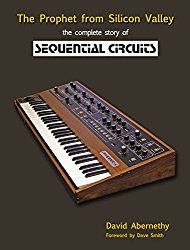
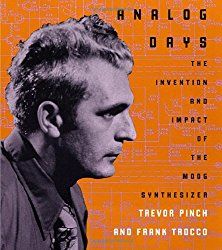
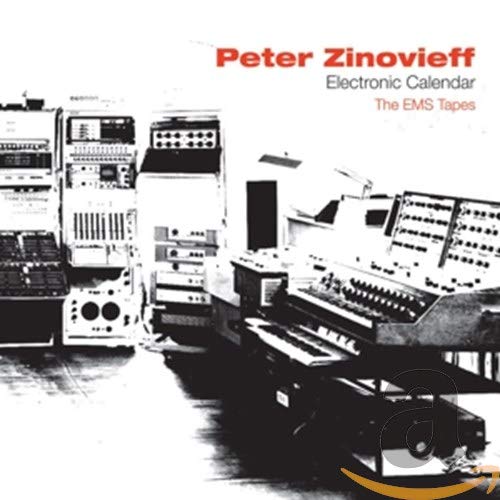
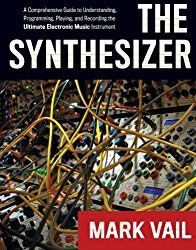

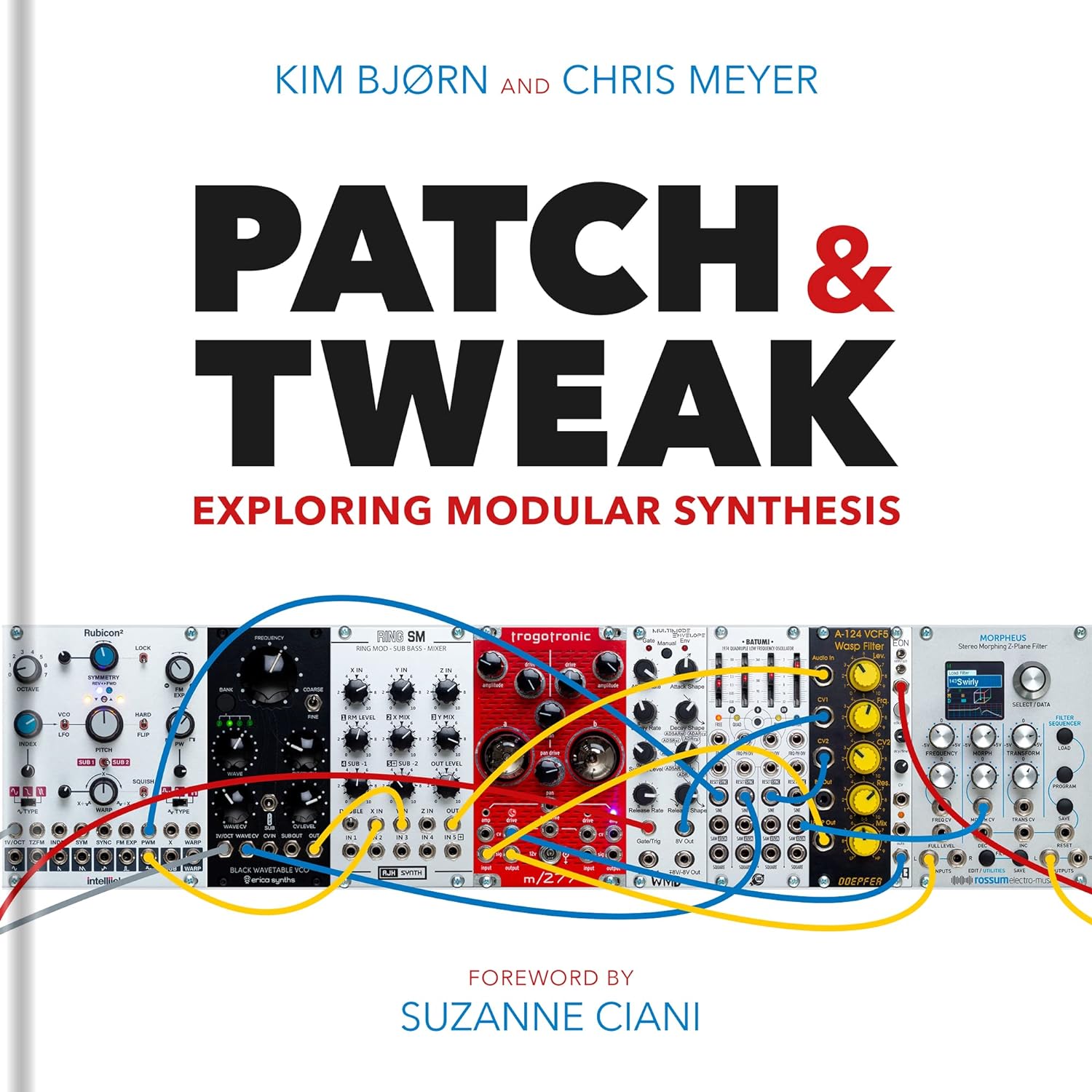
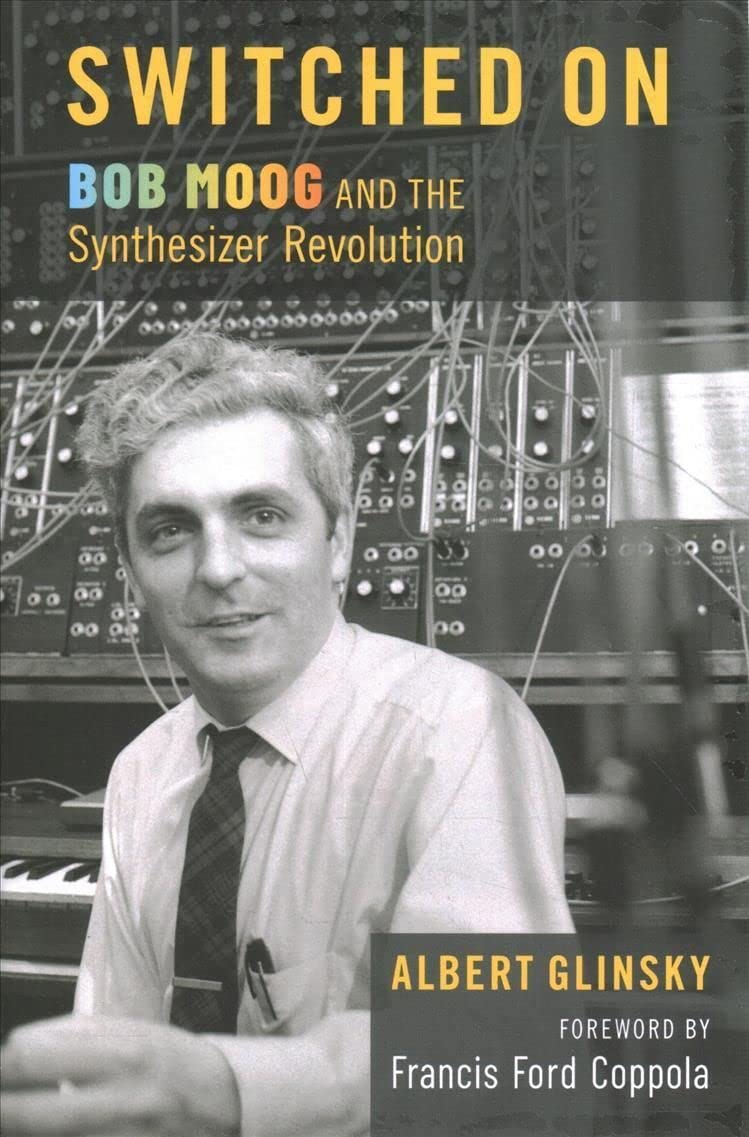
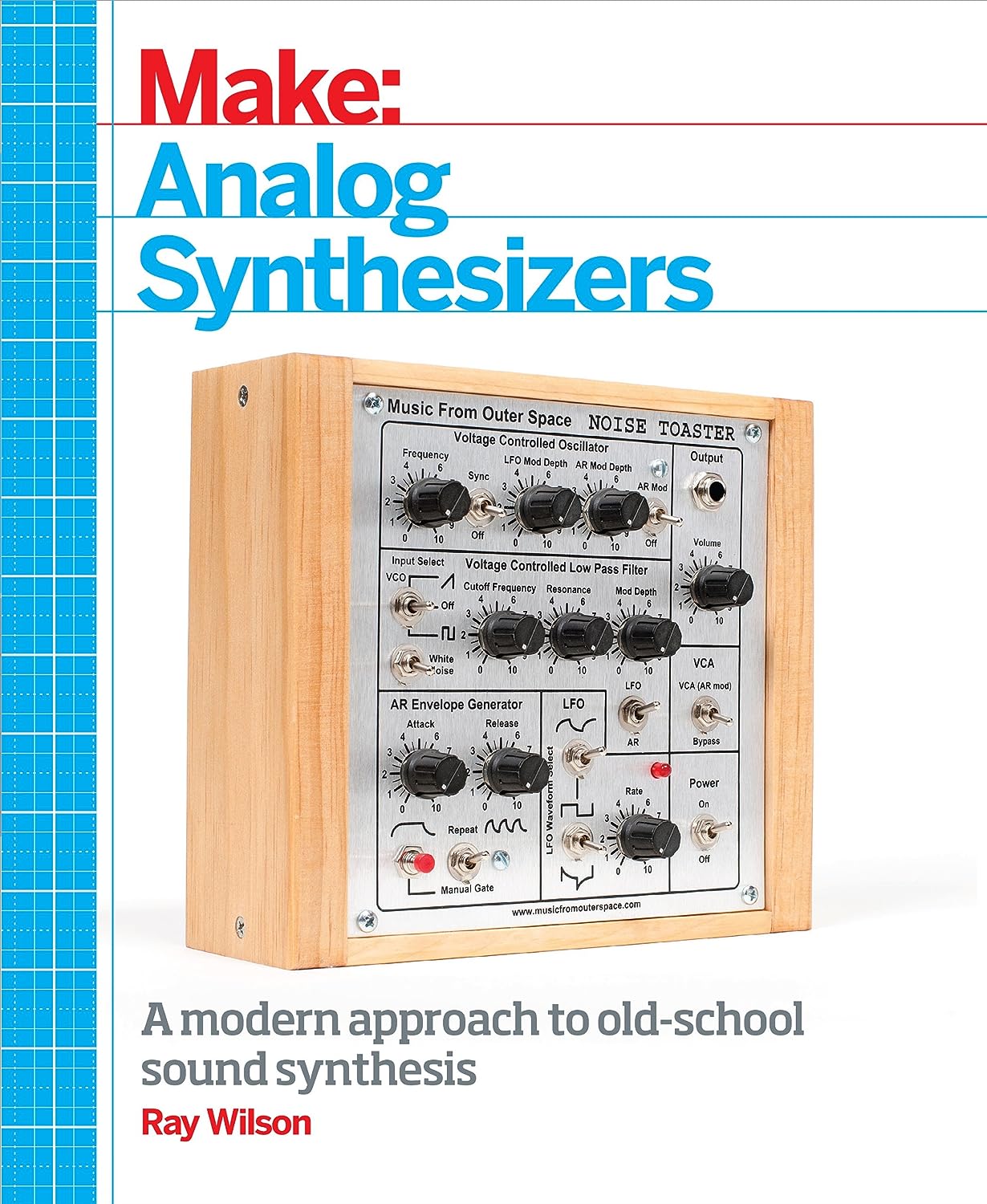
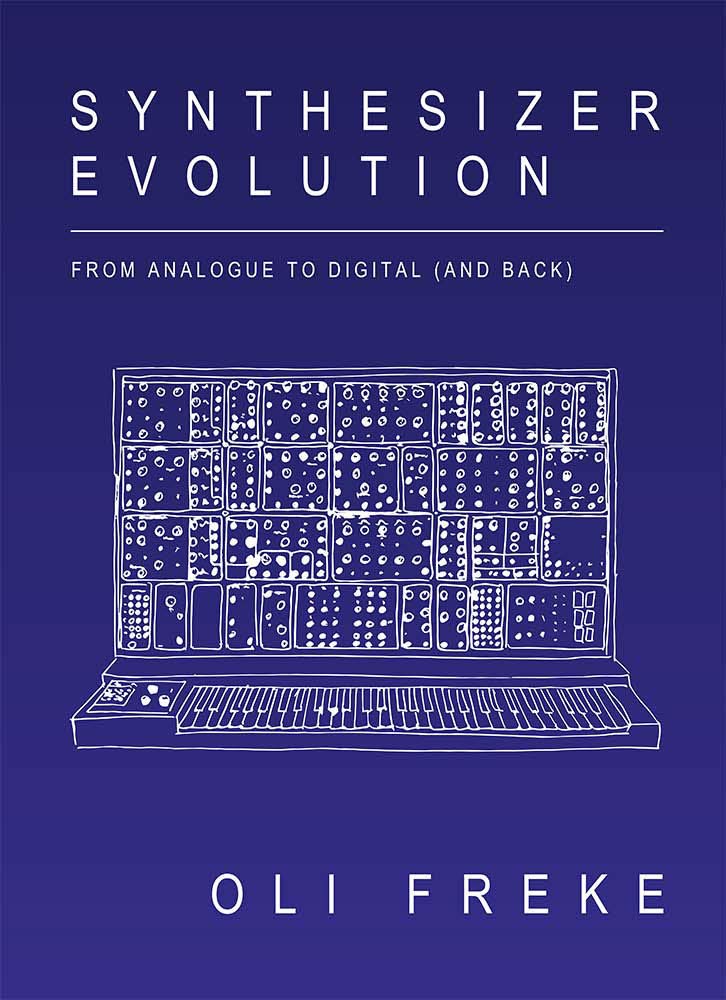

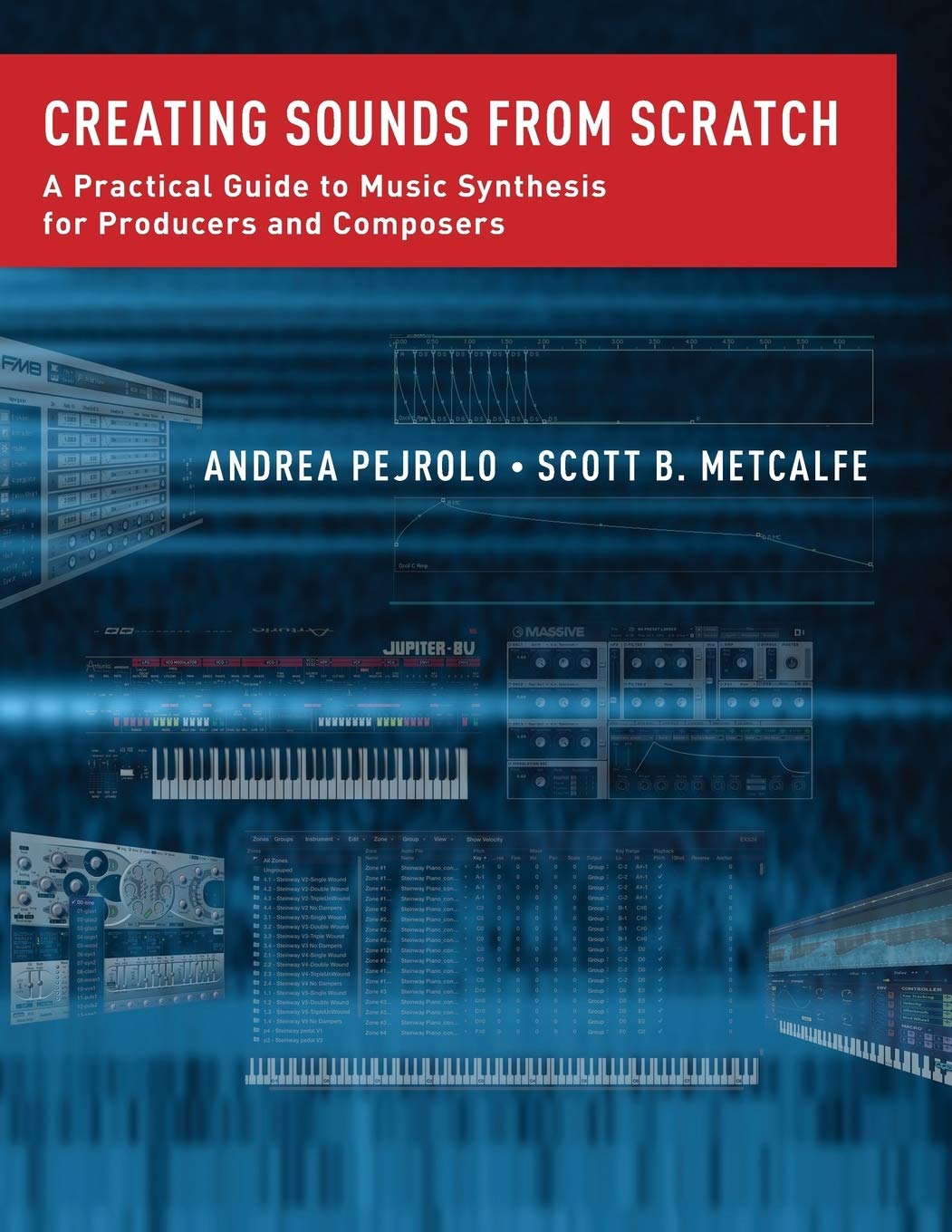


© Matrixsynth - All posts are presented here for informative, historical and educative purposes as applicable within fair use.
MATRIXSYNTH is supported by affiliate links that use cookies to track clickthroughs and sales. See the privacy policy for details.
MATRIXSYNTH - EVERYTHING SYNTH













© Matrixsynth - All posts are presented here for informative, historical and educative purposes as applicable within fair use.
MATRIXSYNTH is supported by affiliate links that use cookies to track clickthroughs and sales. See the privacy policy for details.
MATRIXSYNTH - EVERYTHING SYNTH




















